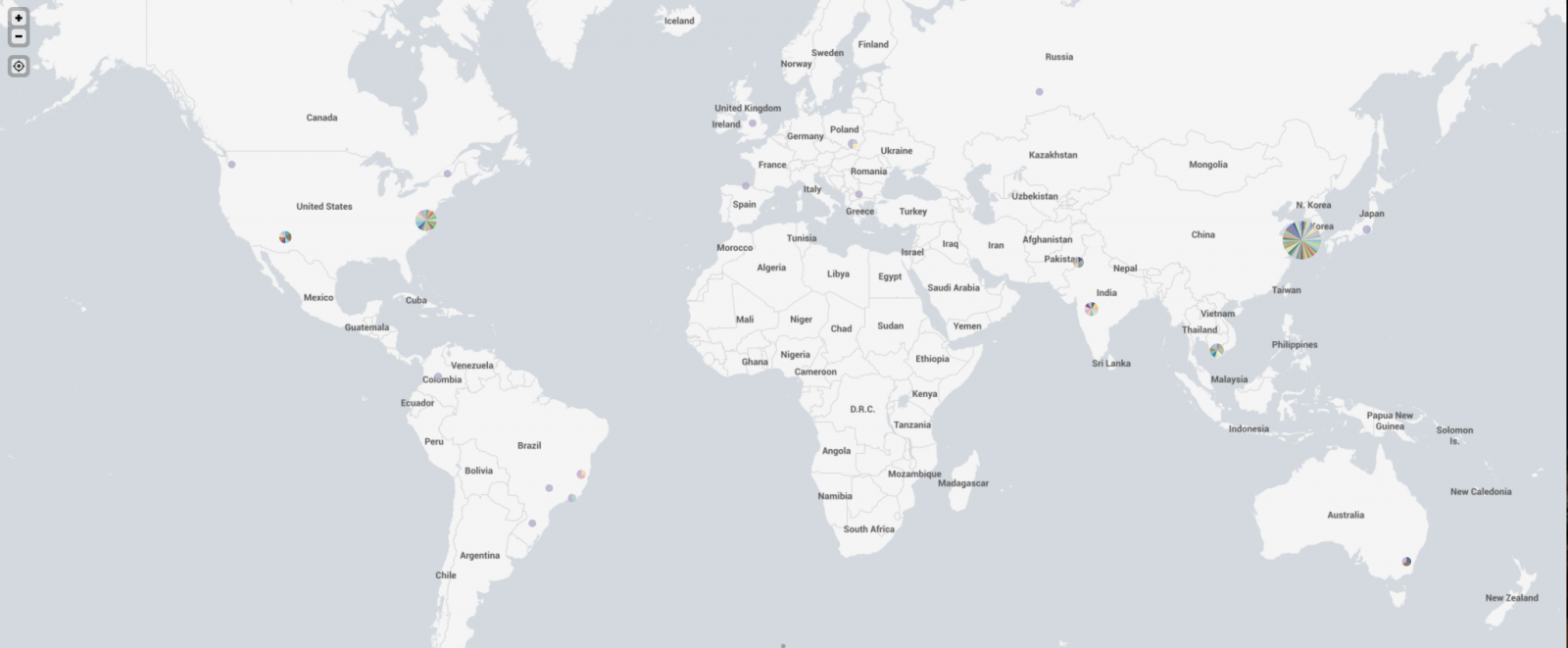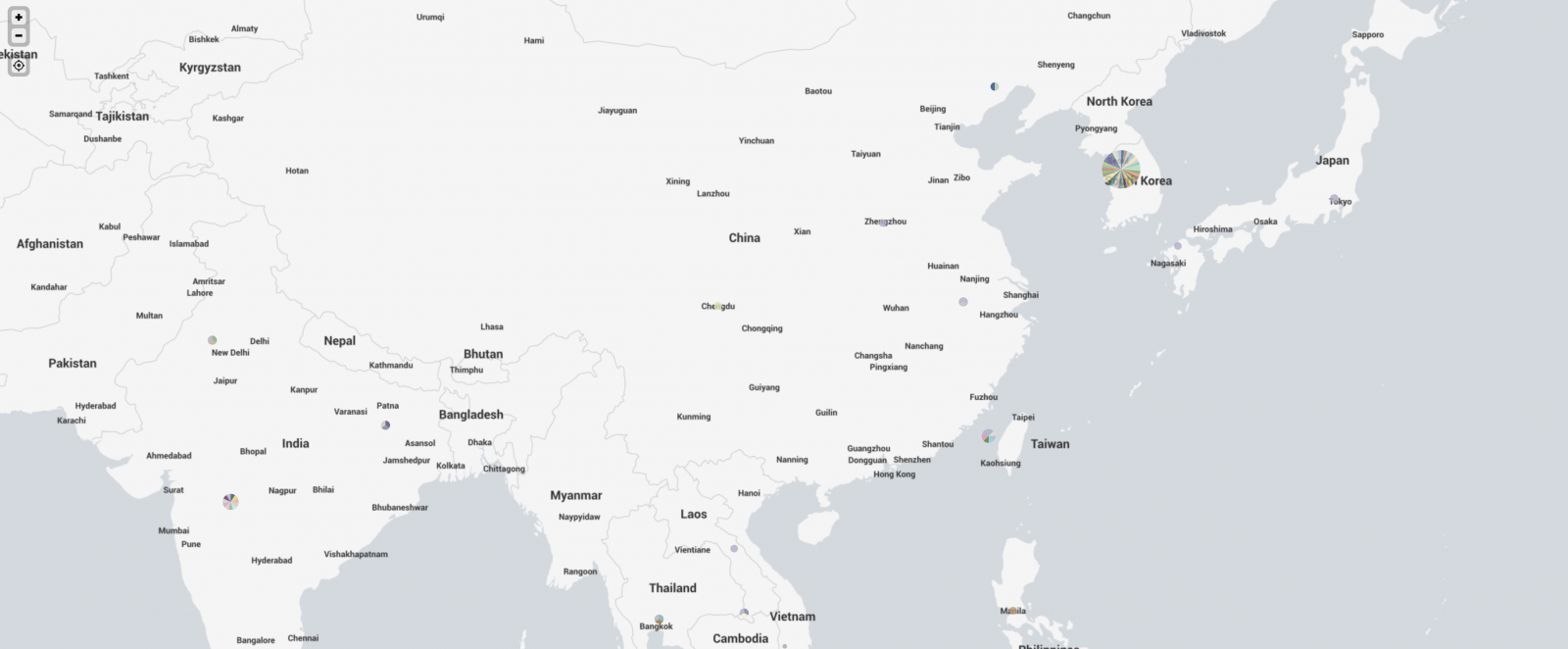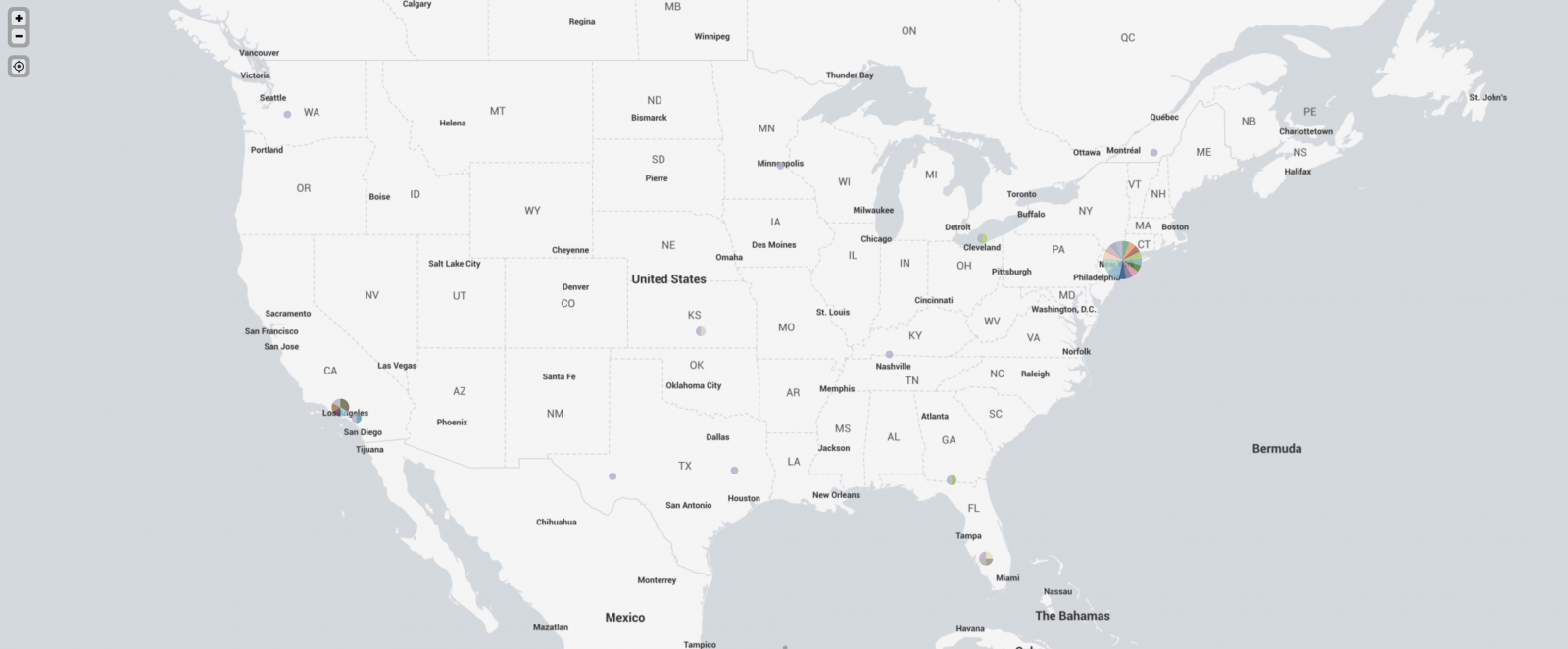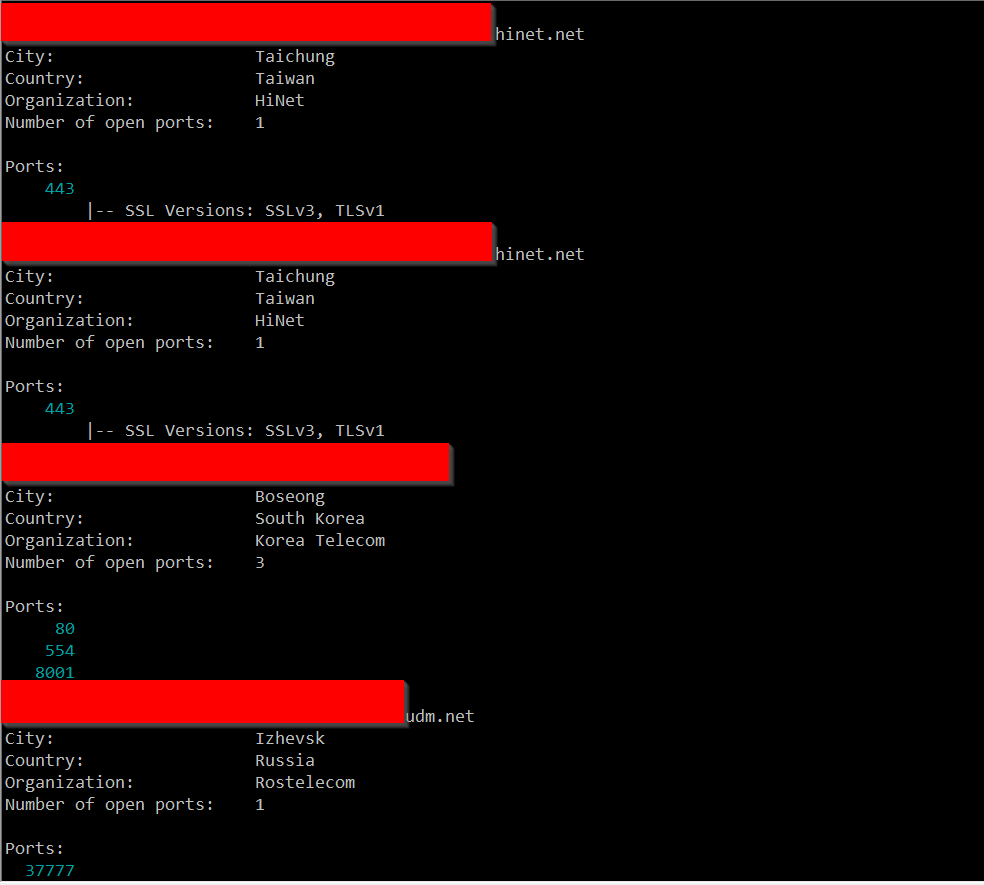So where did those Satori attacks come from?
Last week I posted about a new Satori variant scanning on TCP port 26 that I was picking up in my honeypots. Things have slowed down a bit, but levels are still above where they had been since mid-July 2020 on port 26.
 In some discussion afterward, a question that came up was where were the attacks coming from. My first thought was to take the IPs and run them through the Maxmind DB to geolocate them and map them. I first looked around to see if there was a Python script that would do the job using the Maxmind and Google Maps APIs. I didn't actually find what I was hoping for. I did find a few things that I can probably make work eventually (and if I have some time after I teach next week), perhaps I'll work more on that. In the meantime, Xavier threw the IPs in Splunk for me and got me some maps to show where the attacks were coming from. Now, it turns out that of the 384 attacks I recorded in 2 of my honeypots over the first 3 or 4 days of the spike, they came from 340 distinct IPs. The verdict is... most of them were coming from Korea. Here's what we got.
In some discussion afterward, a question that came up was where were the attacks coming from. My first thought was to take the IPs and run them through the Maxmind DB to geolocate them and map them. I first looked around to see if there was a Python script that would do the job using the Maxmind and Google Maps APIs. I didn't actually find what I was hoping for. I did find a few things that I can probably make work eventually (and if I have some time after I teach next week), perhaps I'll work more on that. In the meantime, Xavier threw the IPs in Splunk for me and got me some maps to show where the attacks were coming from. Now, it turns out that of the 384 attacks I recorded in 2 of my honeypots over the first 3 or 4 days of the spike, they came from 340 distinct IPs. The verdict is... most of them were coming from Korea. Here's what we got.
 And if I zoom in on Asia, we see this
And if I zoom in on Asia, we see this
 And, finally, I took a look at the US.
And, finally, I took a look at the US.
 So, I'm not sure exactly what to make of all of this. I ran a few of these IPs through Shodan and didn't come up with anything in particular that they seemed to have in common, but maybe I didn't run enough of them.
So, I'm not sure exactly what to make of all of this. I ran a few of these IPs through Shodan and didn't come up with anything in particular that they seemed to have in common, but maybe I didn't run enough of them.


If nothing else, this has given me some ideas of projects I need to work on when I have some free time. If anyone has any additional insight, I welcome your comments below or via e-mail or our contact page.
---------------
Jim Clausing, GIAC GSE #26
jclausing --at-- isc [dot] sans (dot) edu
| Reverse-Engineering Malware: Malware Analysis Tools and Techniques | Online | Japan Standard Time | Mar 9th - Mar 14th 2026 |


Comments